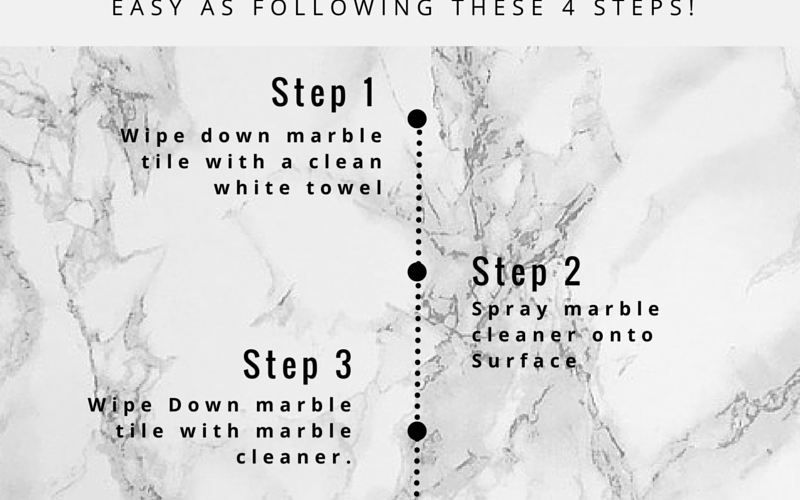Marble counter tops are a luxury item, proper maintenance will ensure they last a lifetime. For general clean-up on marble counter tops, use a damp cloth and a pH neutral cleansing agent, like mild dish washing liquid or a spray cleaner formulated for marble and granite. After wiping down the counter, use a rinse cloth to remove all of the soap from the surface. Extra soap will cause a film to form on the marble. Finally, use a dry cloth to remove all the water from the surface. If water is allowed to dry on the counter, hazy water spots will form. For marble counters in kitchen or bathroom, marble wax or marble sealer should be applied. Avoid using wax on light colored marble because it can discolor. Sealers are formulated to be absorbed into the pores of the stone, preventing stains and creating a protective coating that allows dirt to be easily wiped off.
For marble floors, it’s a good practice to have a runner of floor mat near the door to prevent grit from damaging the marble surface. The best way to maintain marble floors is use to use a dry mop made from terry cloth or microfiber. For major cleaning, once a week or once a month, marble floors should be buffed with a liquid polish or buffing powder. Marble polishing machines weigh as much as a person and have large pads made from very fine steel wool that buff the surface. Polishes usually evaporate very quickly to generate the heat needed to polish the marble. Most of these products should be applied to a dry floor. Always read the manufacturers instructions before applying.
Marble is the premier luxury counter top and flooring surface. Even though marble is a rock, it is can be easily be damaged by two substances; acids and other rocks. Marble is a form of limestone that has been compressed under extreme pressure until it turns into a crystalline form. Marble is easily identified by the swirls and streaks of color, which are related to organic and inorganic material in the limestone. The main constituent of marble is calcium carbonate, a common ingredient in antacids. For this reason, acidic substances like orange juice, citric acidic, vinegar, and club soda can etch the surface of marble. The other natural enemy to marble floor tiles is the fine grit tracked in on shoes. The grit acts like an abrasive sandpaper that dulls the shiny surface with tiny scratches.
For light cleaning, use dish liquid or a spray on marble cleaner. For more difficult cleaning, apply an ammonia solution, using no more than a half cup per gallon of water.
Marble counters and marble furniture should be regularly maintained with a protective polish. A drill-mounted buffer pad is great for polishing large areas quickly. Tough stains from tannins, oils, and metals can be cleaned with a poultice, also sold as stone stain removers. A poultice is like a clay mask for the counter; great for overhauling old or soiled marble counters. Blend the poultice with distilled water until it is the texture of frosting. Wet down the marble with distilled water and apply an even layer 1/4 to 1/2 of an inch thick. Cover the poultice with plastic, a trash bag works well for this. Leave the poultice in place for at least twenty-four hours and allow to air dry completely for another twenty-four hours. Scrape off the dry clay with a non-damaging plastic tool, flush the area with distilled water, buff dry, and polish. Regular polishing and sealing is the most effective way to protect marble from damage.
Other Resources: Marble Institute



